
IRIS login | Reed College home Volume 96, No. 2: June 2017
Colleges That Change Lives
Reed is proud to be featured in the latest edition of Colleges That Change Lives. Originally written in 1996 by former New York Times education editor Loren Pope, the newest edition of the book was released this month. Colleges That Change Lives is different from other college guides. In its own words, it exhorts students to "be bold" and seek a "transformative college experience":
Don't fall for Ivy worship. Don't listen to the blather about "best" schools whipped up by the rankings game. . . . College isn't just about the end result. It's also about the means, the process, the path you take to earn your degree, whom you meet, and who inspires and mentors you.
Continue reading Colleges That Change Lives
Diver: Honor Principle Curtails Cheating
Former Reed president Colin Diver wrote an op-ed in the Boston Globe this morning about the recent allegations that as many as 125 Harvard undergrads had cheated on a final exam last spring.
In contrast to the widespread lament that today's students have an iffy moral compass, Diver declares himself optimistic, based on his experience with Reed students and the Honor Principle:
Continue reading Diver: Honor Principle Curtails Cheating
Fighting Malaria On the Cheap
Malaria is a killer. Over 200 million people are infected every year, and over one million, mostly children, die as a result. It is not a lack of medicine that allows malaria to run rampant; a highly effective treatment called Artemisinin-based Combination Therapy (ACT) has existed for years. The issue is cost: ACT's main ingredient, artemisinin, is prohibitively expensive. A research team led by Indiana State University professor Silas Cook '99 has found a way to change that.
Artemisinin is usually obtained in one of two ways: harvesting it from its natural home in the sweet wormwood plant, or using a bit of biological alchemy to create a synthetic version. Harvesting it from wormwood is a difficult process to begin with: combined with crop shortages caused by poor planning, natural disasters, and other unpredictable disruptions, this method has proven incapable of providing a consistent, cheap yield.
Continue reading Fighting Malaria On the Cheap
Ambassador of Art
The art of Geoffrey Pagen [ceramics 1987–], director of Reed's ceramic program, will grace the exterior of the new U.S. embassy in Bujumbura, the capital city of Burundi.
Pagen has previously exhibited his work in Nouakchott, Mauritania, and the Democratic Republic of Congo as part of the State Department's Art in Embassies program. Exhibitions feature original works from U.S. and host country artists that are compatible with the values of the host country and complement the architecture and interior design of the space. The installations foster visual diplomacy in more than 200 diplomatic venues worldwide. His piece for Burundi is a commissioned piece that will be permanently affixed to the exterior of the new embassy.
Continue reading Ambassador of Art
"Libations!" They Cried
Monday morning, 8:45 a.m. First day of class. As the new crop of freshlings streamed towards Vollum for their first real Hum lecture, laden with backpacks, and clutching coffee cups and water bottles, they were greeted by an unusual spectacle: a veritable pantheon of Greek gods hooting and hollering on the steps outside the lecture hall.
"Libations!" cried the gods. "Libations to honor mighty Zeus!"
Continue reading "Libations!" They Cried
Convoking the Muse
Students, parents, and professors descended in their multitudes upon the Great Lawn on Wednesday for Convocation 2012. Under the billowing big top, 358 newly-minted Reedies were formally inducted into the tribe by an equally fresh president: John Kroger kicked off the ceremony with his first public address as head of the college. Kroger remarked that what he has been struck most by in his first eight weeks cannot be conveyed in a brochure: "Reed is one of the warmest kindest, most welcoming institutions I have ever experienced," he said. "It feels like home."
Home may now be Anna Mann or Foster-Scholz for new students, but they came from all over the globe to get here. Keith Todd, dean of admission, laid out the impressive pilgrimage; students hailed from China, Kenya, New Mexico, and Jakarta, among others. They include more Texans than Minnesotans, several Nicholases and Katherines, not to mention a Thor and a Zeus.
Continue reading Convoking the Muse
Iron Man with a Heart of Gold
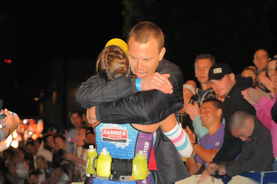
Photo from Cathy Stephens's blog bringiton23.com. Todd tells Cathy, "You are an Ironman."
Todd Hesse never thought it would be a big deal.
At midnight on June 24, Hesse stood at the finish line of the Ironman race in Coeur d'Alene, Idaho. He had completed the grueling triathlon, which comprises a 2.4-mile swim, a 112-mile bike ride, and a 26.2-mile run earlier in the day. It hadn't been a particularly difficult race for Hesse, who works in alumni & parent relations at Reed and who ran an Ironman once before. He was doing it more because he wanted to spend time with his brother.
Continue reading Iron Man with a Heart of Gold
Reedies find Horror a Bit Queer in Article for "Film Matters"
Reedies Kerstin Rosero '11, Stephanie Bastek '13, and Isabel Lockhart-Smith (2010-11 exchange student from the University of East Anglia), have published a collaboratively written article on Henri-Georges Clouzot's Les Diaboliques (1955) in the undergraduate film journal Film Matters.
The current issue of the journal focuses on questions of film genre. The article by Kerstin, Stephanie, and Isabel, "Queer Horror: Unearthing Sexual Difference in Les Diaboliques," argues that, through the denial of suture, the manipulation of filmic space, and a disruption of normative gender roles, Clouzot breaks classical conventions of horror, shifting audience expectations by disrupting the predictability of where, exactly, the horror will come from. The film, however, is all the more frightening for robbing the audience of the safety blanket of expectation. The authors term such an unconventional horror a kind of "queer horror," for its subversion of both sexual difference and genre. The three Reedies wrote the piece as a collaborative course assignment in English 328, Film Theory, taught by Becky Gordon, assistant professor of English and humanities, in spring 2011.
Continue reading Reedies find Horror a Bit Queer in Article for "Film Matters"
Annual Fund Surpasses Goal
 Reed alumni led record-breaking efforts for the Annual Fund this fiscal year, with key leadership provided by a group called Alumni Fundraising for Reed (AFR). From its inaugural meeting in November 2009 to today, the AFR has matured from a group of about 10 people brainstorming around a San Francisco conference table to an established steering committee with several working groups. Last year more than 90 AFR volunteers worked to strengthen Reed's Annual Fund. They are some of the scores of volunteers who donate countless hours to raising money for the college.
Reed alumni led record-breaking efforts for the Annual Fund this fiscal year, with key leadership provided by a group called Alumni Fundraising for Reed (AFR). From its inaugural meeting in November 2009 to today, the AFR has matured from a group of about 10 people brainstorming around a San Francisco conference table to an established steering committee with several working groups. Last year more than 90 AFR volunteers worked to strengthen Reed's Annual Fund. They are some of the scores of volunteers who donate countless hours to raising money for the college.
Alumni joined with parents and friends of Reed to give $3.78 million to the Annual Fund in the fiscal year ending June 30. This amounted to 5% over the goal of $3.6 million. Annual Fund dollars are up 60% over 10 years ago.
"It's wonderful to see Reedies coming together to support the college in this difficult economy," says Hugh Porter, vice president of college relations, "and enormously helpful to the college."
Continue reading Annual Fund Surpasses Goal
Massive Bench Graces SU Porch
For years the porch by the Paradox Café has been graced by an anonymous series of sofas. Coffee-sipping students slouched across them at all hours; their fabric and stuffing distressed by wrappers, cigarette butts, and water damage. Eventually a student union manager would remove a couch for detoxification. A new couch would arrive. Repeat.
The installation of a set of beautiful wooden benches to the Paradox porch last week finally broke the fabric cycle. The 300- to 400-pound sectional benches were hand hewn from a magnificent Douglas fir that stood for nearly 200 years on the east side of campus before falling three winters ago.
Continue reading Massive Bench Graces SU Porch
Reedies Kickstart a Scuttling Wonder
The last wooden walking machine we saw on Reed's campus was a six-foot tall plywood behemoth trundling around the student union. Now David Lansdowne '09, one of the instigators of that project, has teemed up with fellow Reedies Dano Wall '09 and Hannah Monshontz '10 to make coffee-table size toy versions of that crawler.
The Reedies call their venture Small Wonder Toys, and their walking toy, named the Humble Velocipede, is minitaure version of Dutch artist Theo Jansen's Strandbeest. Lansdowne says that they built the first velocipede on a lark during the construction of their Strandbeest, but quickly realized their work was more attractive than other miniatures on the market. Aesthetics is a major reason why Small Wonder choses to use bamboo as the material for their toy, but the choice is also conceptual. "A plastic velocipede would just blend in with the rest of your house." Lansdowne said. "We use bamboo because it stands out as natural in an artificial environment."
Continue reading Reedies Kickstart a Scuttling Wonder
Kroger Takes the Helm
Reed's new president, John Kroger, took office today and has already been spotted at strategic campus locations like Eliot Circle, commons, and the Paradox Café, leather satchel in hand.
Personally, I'm excited about Kroger's presidency for three reasons. The first is his book Convictions, a look at his career as a federal prosecutor fighting mobsters, drug kingpins, and Enron executives. It's provocative, philosophical, confessional, and a cracking good read.
Continue reading Kroger Takes the Helm
Will Reed College Go the Way of Newspapers?
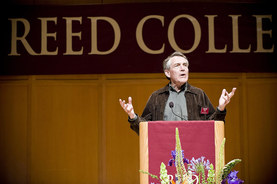 Likening the internet to a tsunami, Reed College President Colin Diver warned the information wave that decimated daily newspapers now threatens undergraduate institutions. He offered a compelling look at the future of colleges like Reed in a June 2 speech entitled "Prix Fixe Education in an à la Carte World: The Impact of the Information Revolution on the Future of Liberal Arts Colleges." Following are excerpts from that speech at the Foster-Scholz Club and Annual Recognition Luncheon.
Likening the internet to a tsunami, Reed College President Colin Diver warned the information wave that decimated daily newspapers now threatens undergraduate institutions. He offered a compelling look at the future of colleges like Reed in a June 2 speech entitled "Prix Fixe Education in an à la Carte World: The Impact of the Information Revolution on the Future of Liberal Arts Colleges." Following are excerpts from that speech at the Foster-Scholz Club and Annual Recognition Luncheon.
Continue reading Will Reed College Go the Way of Newspapers?
Reed Griffin is Rose Parade Royalty
Six-inches high and stuffed with cotton, a griffin sits atop a few worn books stacked on the cluttered desk of Mike Teskey, director of alumni & parent relations. For years this figurine—a plush model of the mythical creature, half lion, half eagle, which Reed takes as its mascot—had fixed its glassy eye on Mike while he worked, and it must have made an impression, because when he walked into the office of the Portland Rose Festival representative to discuss what Reed's float would look like in the upcoming parade, Mike had the stuffed griffin in his hand.
The last time Reed entered a float in the Grand Floral Parade was in 1936. From time to time, alumni would broach the dream of returning to the parade, but like a lot of great ideas, they never got past the broaching stage. Then, at a centennial apple-pressing party in the canyon orchard, Mike struck up a conversation with Jon-Paul Davis '93 and mechanical wizard Rob Mack '93. Rob was the natural choice to spearhead the project; during his Reed days he turned an old Nissan into the infamous Mobile Outdoor Plush Super Upholstered Den (MOSPUD), a mobile beverage-distribution system that graced several Renn Fayres. Rob signed on as Reed's construction leader for the 2012 parade with just one demand: Reed would build the float.
Continue reading Reed Griffin is Rose Parade Royalty
A School in Ruins
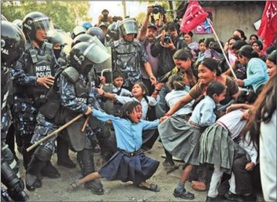
The students at the Mechi Mahakali School in Nepal had just started a new pen pal program with schoolchildren in China. They had been writing emails to one another about themselves, their hobbies, and dreams. But all that ended suddenly in May, when the government bulldozed huts, houses, and other construction in order to evict landless squatters from illegal shanty towns in Kathmandu. Nearly 1,000 villagers were uprooted from their homes, and more than 250 squatter homes on the banks of the Bagmati River were demolished.
One of the first structures to be decimated by the police was the Mechi Mahakali school (MM). The school was the brainchild of Xeno Acharya '09, who used his McGill Lawrence grant after senior year, as well as the thousands of dollars raised through Reed and the Portland community, to build and fund the institution. The school, which had over 150 children, had been instrumental in forging connections between villagers and consolidating this once scattered area of refugees into a self-assured community. They had even proclaimed themselves as Paurakhi Gaun (or "diligent village" in Nepali). Erica Boulay '11, who volunteered at MM for a summer and still works actively to ensure its operation, was outraged at the brazen destruction.
"The kids and their mothers formed a human shield against the bulldozers," Erica recounted. "Children as young as seven were arrested and sent to jail. Although they were released, what did they do wrong? Is it a crime to be poor?"
Earlier, Prime Minister Baburam Bhattarai said that the government planned to provide Rs. 15,000 (approximately $168) to each landless family to provide for alternative accommodations. However, only 39 families have been identified by the government as genuine landless squatters. Those families who earlier refused to participate in the verification process have now been asked to fill out forms and cooperate with the government's eviction drive. Due to the uproar this eviction has caused, the drive to remove all landless squatters living along the river bank will resume only after the government has reviewed its action and the claims of those living along the banks to the land. Following the school's demolition, Xeno has been trying to keep the supplies that were rescued from the destruction dry, while also providing meals, clothing, and temporary shelter for MM students and their families.
Continue reading A School in Ruins
Students Build Bench out of Fallen Doug Fir
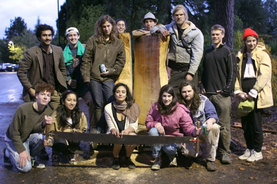
As the sun sets on a wet Friday afternoon, students painstakingly finish sawing the archaic log in half. Photos by Alexi Horowitz '13.
Check out the video by Alexi Horowitz '13
Sawdust flew, chips piled up on the ground, and a sweet piney scent permeated the air as the crosscut gnashed its way through the log. The tree was a Douglas fir that had presided over the Great Lawn, right behind the softball backstop, for 130 years. As the story goes, the 100-foot tree fell during the snowy winter of '09, exposing the decayed roots that caused its downfall.
But the tree's story was not over. Marie Perez '12 got the idea to craft a bench out of a giant section of the trunk. She and other Reedies undertook the mammoth task of using a four-foot crosscut saw (old-timey two-person logging saw) to cut the log in half. Students were invited every evening of finals week to put their studying on hold and come out to the west parking lot to help slice the wood. Over 40 students and staff members turned out to help fashion the trunk into a (very) solid bench for all to sit on. It took about 17 hours of solid sawing to completely halve the log.
Continue reading Students Build Bench out of Fallen Doug Fir
Fanfayre honors history and achievement
Reunions 2012 traveled backward and forward through time at the Fanfayre ceremony celebrating outstanding alumni, staff, and faculty.
John Sheehy '82 presented his the epic oral history of Reed College, Comrades of the Quest, an volume of "almost biblical" dimensions that was, he said, the closest thing Reed has to scripture. Despite its size, he noted that the "director's cut" would be about 30-percent longer: "Reedies appear almost incapable of expressing themselves in a single sentence when a full paragraph—or a full dissertation—will do just as well."
Continue reading Fanfayre honors history and achievement
A Five-Octave Finale
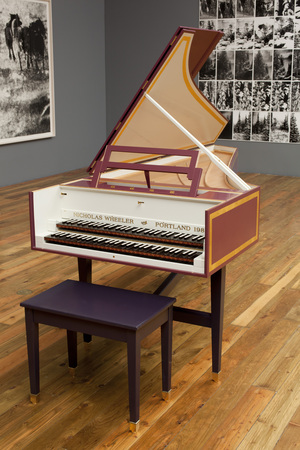 The Douglas F. Cooley Memorial Art Gallery was packed to the rafters last week as alumni from many eras came together in a hush of anticipation to witness a unique occasion--the unveiling of the French double harpsichord created by professor Nicholas Wheeler '55 [physics 1963-2010] over a span of 26 years, and showcased during Reunions '12: Reedfayre.
The Douglas F. Cooley Memorial Art Gallery was packed to the rafters last week as alumni from many eras came together in a hush of anticipation to witness a unique occasion--the unveiling of the French double harpsichord created by professor Nicholas Wheeler '55 [physics 1963-2010] over a span of 26 years, and showcased during Reunions '12: Reedfayre.
Nick became fascinated by the harpsichord (the distinguished ancestor of the piano) while playing at a concert his freshman year at Reed and resolved to build his own some day. He finally began work many years later, in August 1985, when he was A.A Knowlton Professor of Physics. While the bulk of the carpentry and metalwork were completed in the two years that followed, the venture languished for two decades when his teaching and other things took greater precedence. Nick was not able to put finishing touches on the instrument until after his retirement in 2010, after 47 years of service.
"This is a Reed instrument and its first public appearance. It's something I've fantasized about for 60 years," Nick remarked. Returning students and friends continued to ask over the years when and if the project would ever be finished. "It is a doubt which I confess, I sometimes shared: it gave me anxiety because I did not want to leave to my heirs the problem of figuring out how to dispose of a stringless box that looked like a harpsichord, but was unplayable." However friends, such as professor Kathleen Worley, [theatre 1985-] helped along the way by picking up some gold-dipped hardware and wood scrapers.
Continue reading A Five-Octave Finale
Paradox Embraced: A History of Reed Presidents
Reed's presidential history, like that of the college itself, is a history of paradoxes.
This was the argument of trustee and historian John Sheehy '82 in his lecture "The Presidents of Reed" at Reunions 2012. The central paradox of Reed, he said, is the combination of academic conservatism with cultural progressivism. This has given birth over the years to such quandaries as Reed's historically high attrition rate (as students struggled to impose the self-discipline required for intellectual freedom) to ongoing debates like faculty pay equity or marijuana use on campus.
These conflicts, though, have by no means held Reed back. Instead, Sheehy said, "the only way to move forward was to work within the paradoxes." The Honor Principle was one example of this, occupying the "middle ground" between rules and anarchy. In the end, it has been how well each president has embraced the Reed paradox that has determined his success.
Continue reading Paradox Embraced: A History of Reed Presidents
Sweating It out in the Steam Tunnels
Dimly lit pathways, dusty pipes, graffiti, and intense humidity. At Reed, that could mean one place on campus—the steam tunnels.
One of the attractions during Reunions: Reedfayre '12 was a tour of Reed's mysterious steam tunnels by the Physical Plant's own Steve Yeadon. The labyrinthine route, which made one feel like Indiana Jones on a dangerous mission, started from the basement of Physical Plant, where two gigantic boilers (usually fired by gas, but sometimes by oil, if gas is too expensive) generate the steam that gives the tunnels their purpose.
The tour then wound its way through the depths of Reed, as visitors took care not to bump into the cobwebbed walls or pipes. The abundant graffiti on the pipes, preserved through the years (because as one alum mentioned, the pipes were the only things not whitewashed over for commencement every year), proved highly entertaining.
Continue reading Sweating It out in the Steam Tunnels
< Prev 1 2 3 4 5 6 7 8 9 10 11 12 13 14 15 16 17 18 19 20 21 22 23 24 Next >

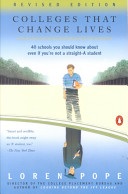
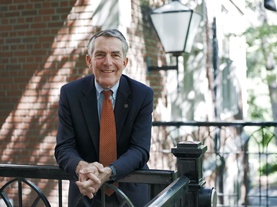
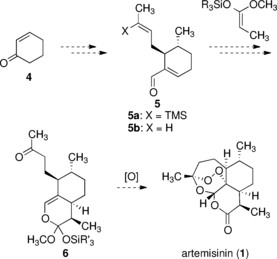
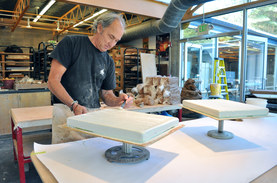
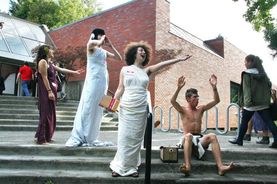
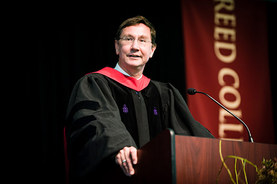
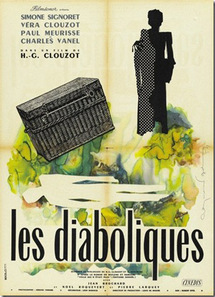
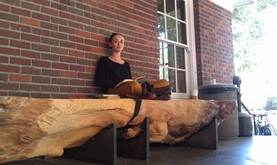
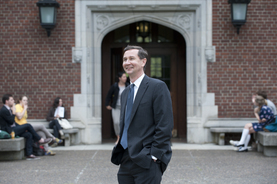
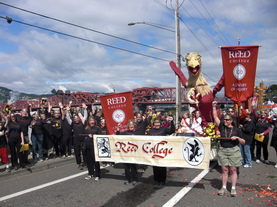
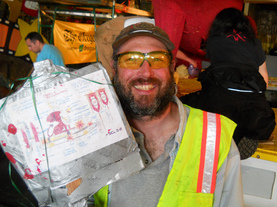
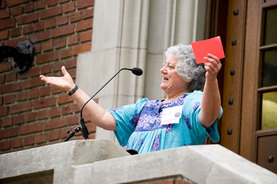
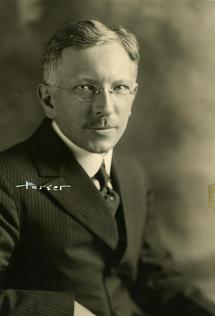
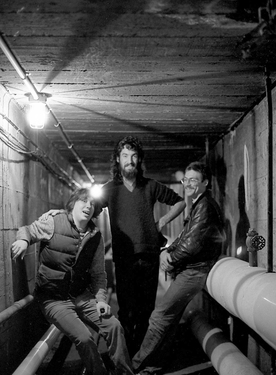

LATEST COMMENTS
steve-jobs-1976 I knew Steve Jobs when he was on the second floor of Quincy. (Fall...
Utnapishtim - 2 weeks ago
Prof. Mason Drukman [political science 1964–70] This is gold, pure gold. God bless, Prof. Drukman.
puredog - 1 month ago
virginia-davis-1965 Such a good friend & compatriot in the day of Satyricon...
czarchasm - 4 months ago
John Peara Baba 1990 John died of a broken heart from losing his mom and then his...
kodachrome - 7 months ago
Carol Sawyer 1962 Who wrote this obit? I'm writing something about Carol Sawyer...
MsLaurie Pepper - 8 months ago
William W. Wissman MAT 1969 ...and THREE sisters. Sabra, the oldest, Mary, the middle, and...
riclf - 10 months ago